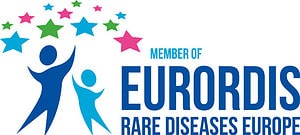General Info for POLG2-Related Progressive External Ophthalmoplegia
Overview
POLG2-related progressive external ophthalmoplegia, also known as POLG2-related CPEO or PEOA4, is a rare mitochondrial condition. Mitochondria are parts of a cell that help turn the energy we get from food into energy that the body can use. They are also important in the communication between body parts and creating other materials the body needs. Mitochondrial conditions can cause a variety of signs and symptoms in many parts of the body, particularly those that use a lot of energy like muscles and the brain.
POLG2-related CPEO is part of a group of conditions known as ‘mitochondrial DNA maintenance defect’ conditions, specifically ‘mitochondrial DNA synthesis’ conditions. The gene POLG2 and other related genes are important in the creation of new copies of mitochondrial DNA (mtDNA). This can cause either too little mtDNA to be produced (mtDNA depletion) or errors in the mtDNA (mtDNA deletions). This results in decreased energy to different parts of the body.
Alternative Names
- POLG2-Related CPEO;
- PEOA4
Related Conditions
Genetics
Affected Genes
POLG2
Cause and Genetics
POLG2-related CPEO is an inherited genetic condition, meaning it is passed down in a family. People usually have two copies of the POLG2 gene, one inherited from each parent. POLG2-related CPEO occurs when there is a change in one copy of the POLG2 gene (autosomal dominant inheritance). If a parent has a change in one copy of their POLG2 gene, there is a 1 in 2, or 50% chance with each pregnancy that their child would also have the same change in POLG2. Both males and females can have POLG2-related CPEO.
Frequency
Frequency (Global)
The exact frequency of POLG2-related CPEO is not known. It is thought to be very rare and limited reports exist in the scientific literature.
Affected Biological Gender
Both Male and Female
Signs and Symptoms of POLG2-Related Progressive External Ophthalmoplegia
POLG2-related CPEO causes a range of signs and symptoms. These may differ greatly, even among members of the same family, so always check with your provider if new symptoms appear or you are concerned.
POLG2-related CPEO and other forms of CPEO involve a loss of muscle function in the eye and eyelid. Features usually begin between the ages of 18 to 40 years. These commonly include:
- Weakness or paralysis (inability to move) of the muscles that move the eye called ophthalmoplegia
- Drooping of the eyelids known as ptosis
Some people with POLG2-related CPEO can show other signs and symptoms from the time they are babies up until adulthood. Symptoms can be mild or very severe. These can include:
- Muscle weakness and fatigue
- Delayed psychomotor development
- Lactic acidosis
- Constipation
- Liver disease
Diagnosis
POLG2-related CPEO can be diagnosed by:
- Careful eye examination
- Performing a genetic test to look for changes in the genes POLG2 and/or other genes known to cause CPEO
If someone has POLG2-related CPEO and other features, a doctor may suggest other examinations and tests like:
- Measuring biochemical markers in blood and urine
- Looking at a small piece of muscle tissue under a microscope (muscle biopsy).
- Imaging of the abdomen or other GI and liver tests
POLG2-related CPEO is not included on newborn screening panels. If there is a known family history of POLG2-related CPEO, prenatal testing can be performed on amniotic fluid (the fluid surrounding a baby) or chorionic villi (a specific part of the placenta).
Treatment of POLG2-Related Progressive External Ophthalmoplegia
Treatment and Management
Before beginning any treatment or therapy, please consult with your physician.
There is currently no FDA-approved therapy for POLG2-related CPEO. Treatment and management of POLG2-related CPEO is symptomatic and supportive. This may include:
- Surgery for ptosis or strabismus if double vision occurs
- Special glasses that have a “ptosis crutch” to lift the upper eyelid
- Avoidance of mitochondrial toxins like certain drugs, tobacco and alcohol
- Mitochondrial supplements
- Special schooling arrangements
Individuals living with POLG2-related CPEO typically see an eye doctor called an ophthalmologist regularly. If someone has CPEO and additional symptoms (CPEO plus), they may have additional treatment and follow up with other doctors depending on their symptoms. These can include:
- Neurology for their muscles and brain
- Gastroenterology for GI conditions
- Hepatology for liver conditions.
Type of Specialists and Clinicians
- Gastroenterology
- Hematology
- Neurology
Resources
- MedlinePlus Genetics — Progressive external ophthalmoplegia
- The National Institute of Health — Chronic progressive external ophthalmoplegia – About the Disease
- NORD — Chronic progressive external ophthalmoplegia
- POLG-related disorders and their neurological manifestations
- Borsche, Max, et al. “POLG2-Linked Mitochondrial Disease: Functional Insights from New Mutation Carriers and Review of the Literature.” The Cerebellum (2023): 1-10.
- Science Direct
- POLG Foundation
Connecting with others impacted by a rare disease allows for vital information to be shared about day-to-day life, prevents isolation, and gives hope. Please contact MitoAction for peer support opportunities at 888-MITO-411 or email mito411@mitoaction.org.
Other resources we recommend are:
Download the POLG2-Related Progressive External Ophthalmoplegia Fact Sheet (PDF)
MitoAction does not provide medical advice, diagnosis, treatment, or legal advice. It is essential that all those living with or caring for someone with a Mitochondrial or FAOD disease have an emergency protocol letter. These letters, which are written and signed by a doctor, share details about prescribed treatment during crises and in emergency room settings. Always check with your doctor if you or your child has concerns as everyone may present with symptoms differently. Before beginning any treatment or therapy, please consult with your physician.
Sources:
- Entry – #610131 – PROGRESSIVE EXTERNAL OPHTHALMOPLEGIA WITH MITOCHONDRIAL DNA DELETIONS, AUTOSOMAL DOMINANT 4; PEOA4 – OMIM
- Mitochondrial DNA Maintenance Defects Overview – GeneReviews® – NCBI Bookshelf
- Borsche, Max, et al. “POLG2-Linked Mitochondrial Disease: Functional Insights from New Mutation Carriers and Review of the Literature.” The Cerebellum (2023): 1-10. https://link.springer.com/article/10.1007/s12311-023-01557-x
- https://www.ncbi.nlm.nih.gov/medgen/102439
- https://www.uniprot.org/uniprotkb/Q9UHN1/entry
- https://www.ncbi.nlm.nih.gov/pmc/articles/PMC6620465
Last Updated: 07/12/2024









